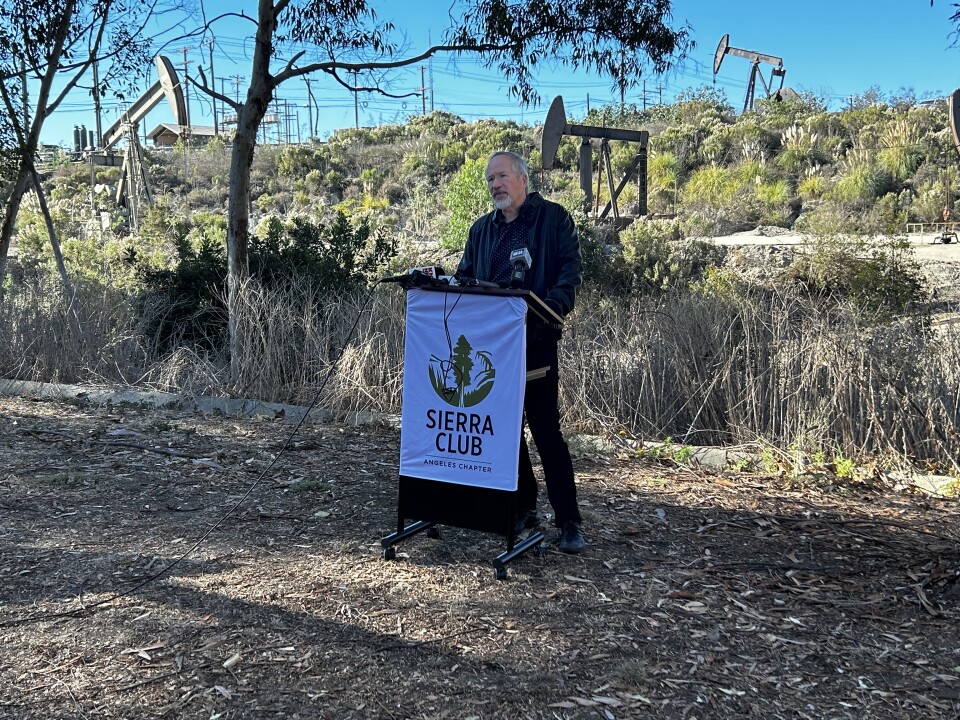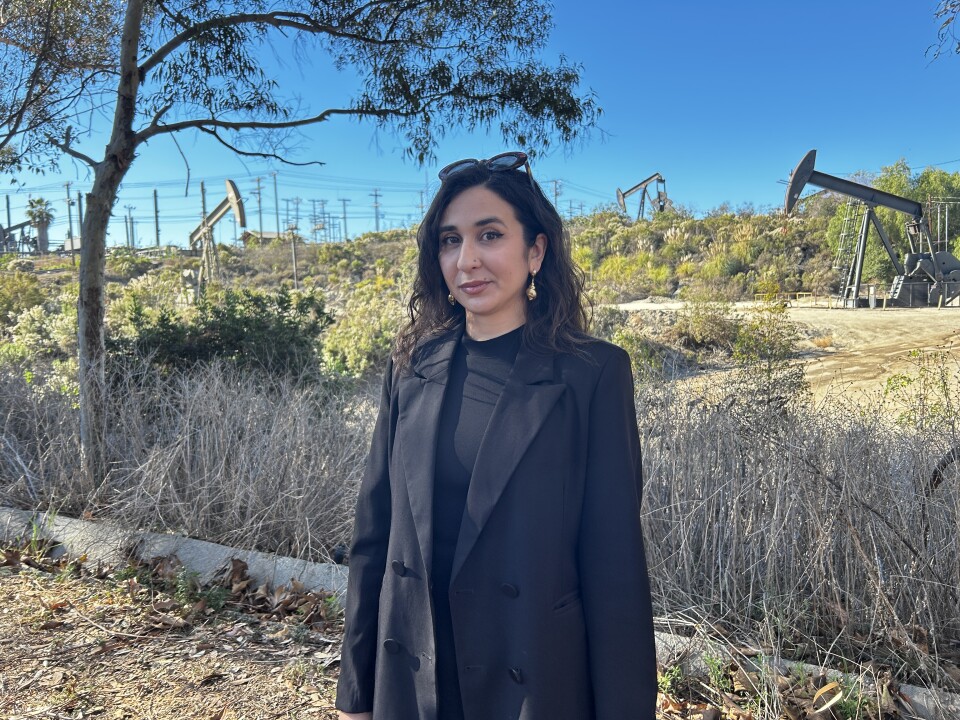Truth matters. Community matters. Your support makes both possible. LAist is one of the few places where news remains independent and free from political and corporate influence. Stand up for truth and for LAist. Make your year-end tax-deductible gift now.
Idle Oil Wells Are A Problem For Health And Climate. Who Should Pay For Cleaning Them Up?

There are more than 35,000 idle oil wells in California, according to state data. Idle wells are wells that haven’t produced any oil for two years or more and have yet to be properly plugged or put back into production.
Many of these wells leak methane, a powerful planet-heating gas. They often also leak chemicals that have been linked to cancer and other health impacts.
L.A. County has more idle (and active) wells than any other urban area in the state, putting the health of thousands of Angelenos — largely low-income communities of color — at risk from chemicals that may leak from idle wells. That’s why many advocate groups say these regulations don’t go far enough, and that state policies should put more pressure on oil companies to clean these wells up, including a timeline on closing idle wells, especially those near where people live, play and work.
And they say oil companies, not taxpayers, should be required to pay for that cleanup. That’s the subject of a new report from the Sierra Club.
A multibillion dollar need

The report used data from CalGEM — the state agency that regulates oil drilling operations — to identify operators of tens of thousands of idle wells across the state and found it could cost $10 billion to clean up all the idle wells across California. The report also found that large oil companies operating in the state have more than enough profit to pay for plugging their own idle wells. The report found that Chevron, Aera Energy and California Resources Corporation own two thirds of idle wells in the state.
“The oil industry created this problem, and it's their responsibility to clean it up,” said David Haake, a professor at UCLA’s school of medicine who has long lived in Culver City, near the Inglewood oil field, which has active and idle wells. Haake has lost two spouses to cancer, which he attributes to living in close proximity to oil drilling. That’s the reason he became a volunteer with the Sierra Club.

The report relied on publicly disclosed profit data from those companies. The report calls for additional policies, such as putting a time limit of six months to a year for how long idle oil wells can remain unplugged.
“California taxpayers should not be on the hook to pay the billions of dollars it will cost to clean up these wells,” said Jasmine Vazin, who focuses on the oil industry for the Sierra Club. “We need policy changes that hold this industry accountable for the cost of cleaning up their wells.”
State laws on idle oil wells
Under state law, oil operators have three options when it comes to dealing with an idle oil well:
- They can pay a yearly fee for each of their idle wells.
- They can submit a plan to clean up and plug those wells.
- They can do nothing … and the well will be declared abandoned and become the responsibility of the state … and taxpayers … to clean up. Then those wells become designated as “orphan” wells.
Federal and state laws also require fossil fuel companies to set aside funds to ensure that wells are ultimately plugged and remediated.
There’s been some progress in advancing more oversight of idle wells in recent years — state rules that went into effect in 2019 require oil operators to regularly monitor their idle wells for leaks. Rules that went into effect as a result of 2016 legislation have also led to improvements in plugging more idle wells, according to a study released by CalGEM.
CalGEM also recently released a priority list of orphan wells to clean up, including several sites in L.A. The agency estimates cleaning up those wells will cost $80 million from both state and federal funds, such as the Inflation Reduction Act.
But that cost is why Vazin said the state should do more to prevent idle wells from becoming “orphan” wells in the first place.
“If all of the idle wells we currently have become orphan, what CalGem is doing now — plugging orphan wells with federal and state taxpayer money — is what we're going to be facing for all of the wells in California,” she said.
What the oil industry says
The Western States Petroleum Association, the oil industry’s trade organization that has long lobbied for less strict industry regulations in the state, refuted the Sierra Club’s findings.
“This report is meant to provide policy makers an erroneous and exaggerated picture of idle well policy in the state,” it wrote in a statement.
Chevron, Aera Energy and the California Resources Corporation, which oversee the most idle wells in the state, all told LAist that they have plugged thousands of oil wells since 2019, far above the pace reflected in CalGEM data revealed in the Sierra Club's report.
Chevron stated they have plugged more than 2,200 wells so far this year and 6,800 wells in California over the last five years. The Sierra Club report, based on CalGEM data, shows the total number of wells Chevron plugged in 2022 was 154, while the total between 2018-2022 was 1,214.
Aera Energy oversees the second highest number of idle wells, and they wrote in a statement to LAist that since 2019, they’ve plugged more than 5,000 idle wells and are on track to plug 950 in 2023.
The California Resources Corporation oversees the third-highest number of idle wells in the state and the largest number in L.A. county, according to the Sierra Club’s report. In an emailed statement to LAist, spokesperson Rich Venn said the company has permanently plugged about 1,400 idle wells in the last two years and that the company currently oversees about 5,000 idle wells, as opposed to the 6,658 stated in the Sierra Club’s report, which used CalGEM data through April 2023.
“CRC invests significantly to permanently plug idle wells in accordance with state mandates,” Venn wrote.
Across the board, most of these wells are being plugged in rural areas (where the vast majority of these wells are located), according to a 2020 investigation by the L.A. Times and the Center for Public Integrity.
Venn added that the company is also investing in new technologies to repurpose their idle oil wells to extract geothermal energy, a climate-friendly renewable energy that California is working to expand as it transitions from fossil fuels.








